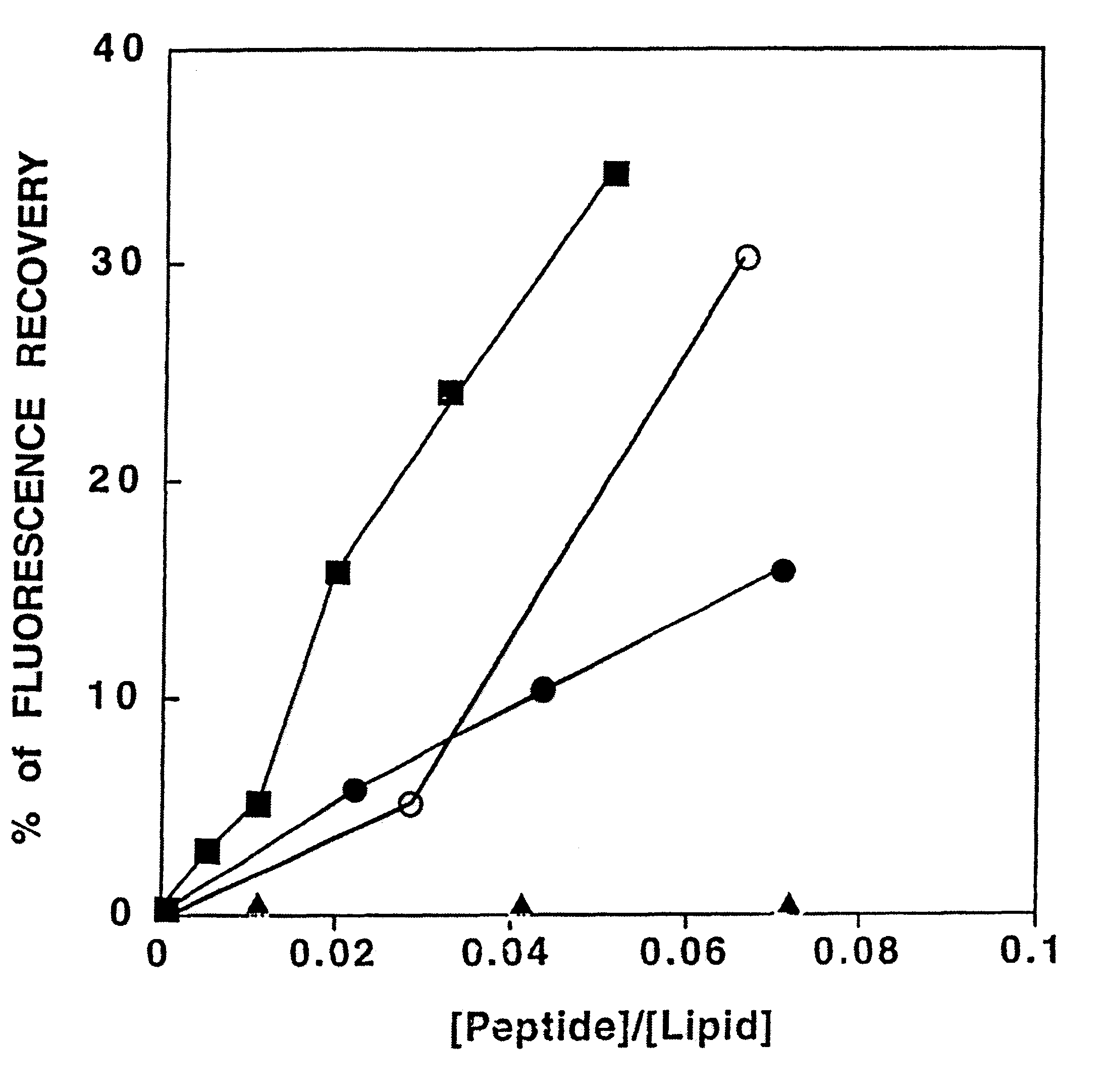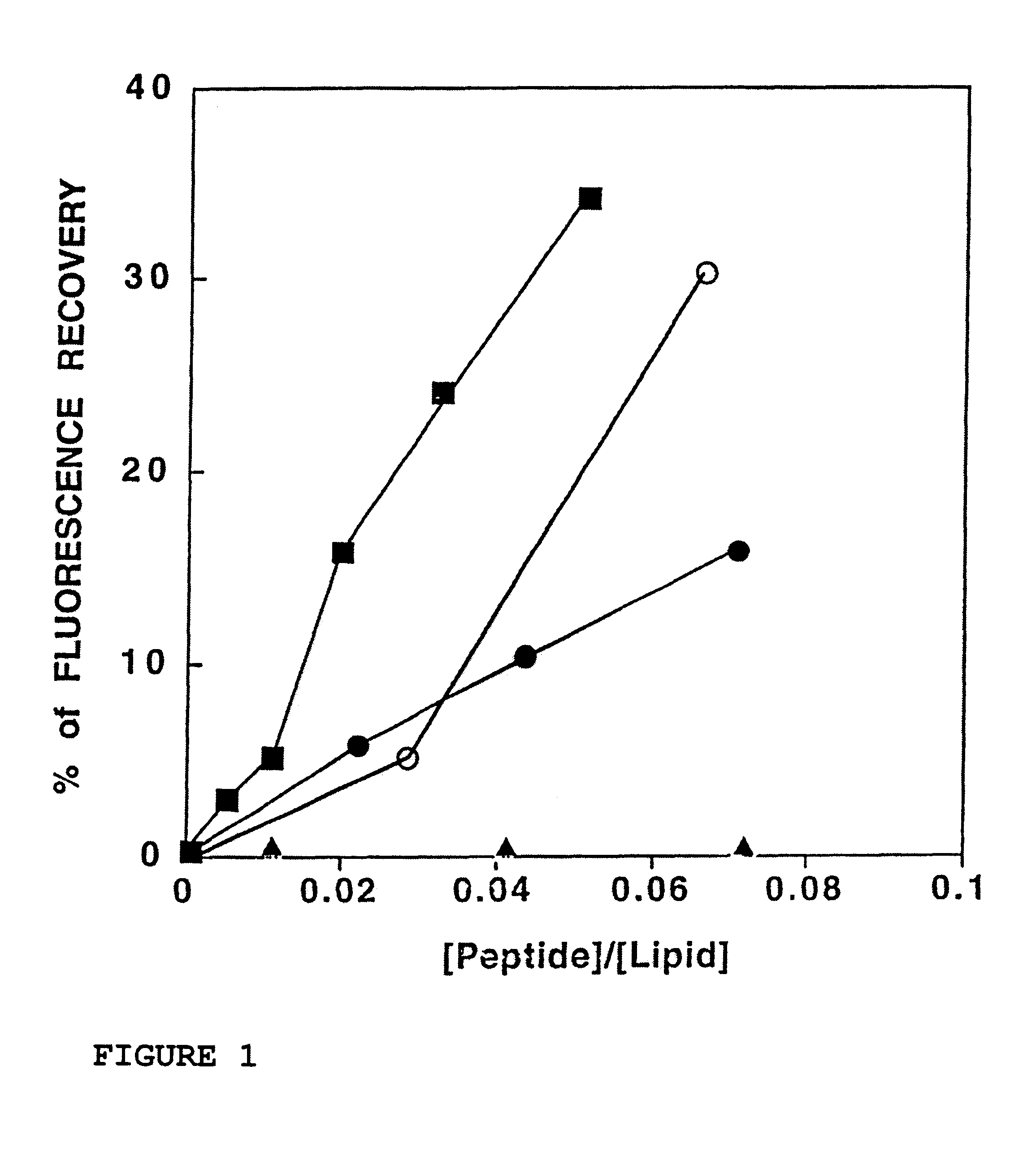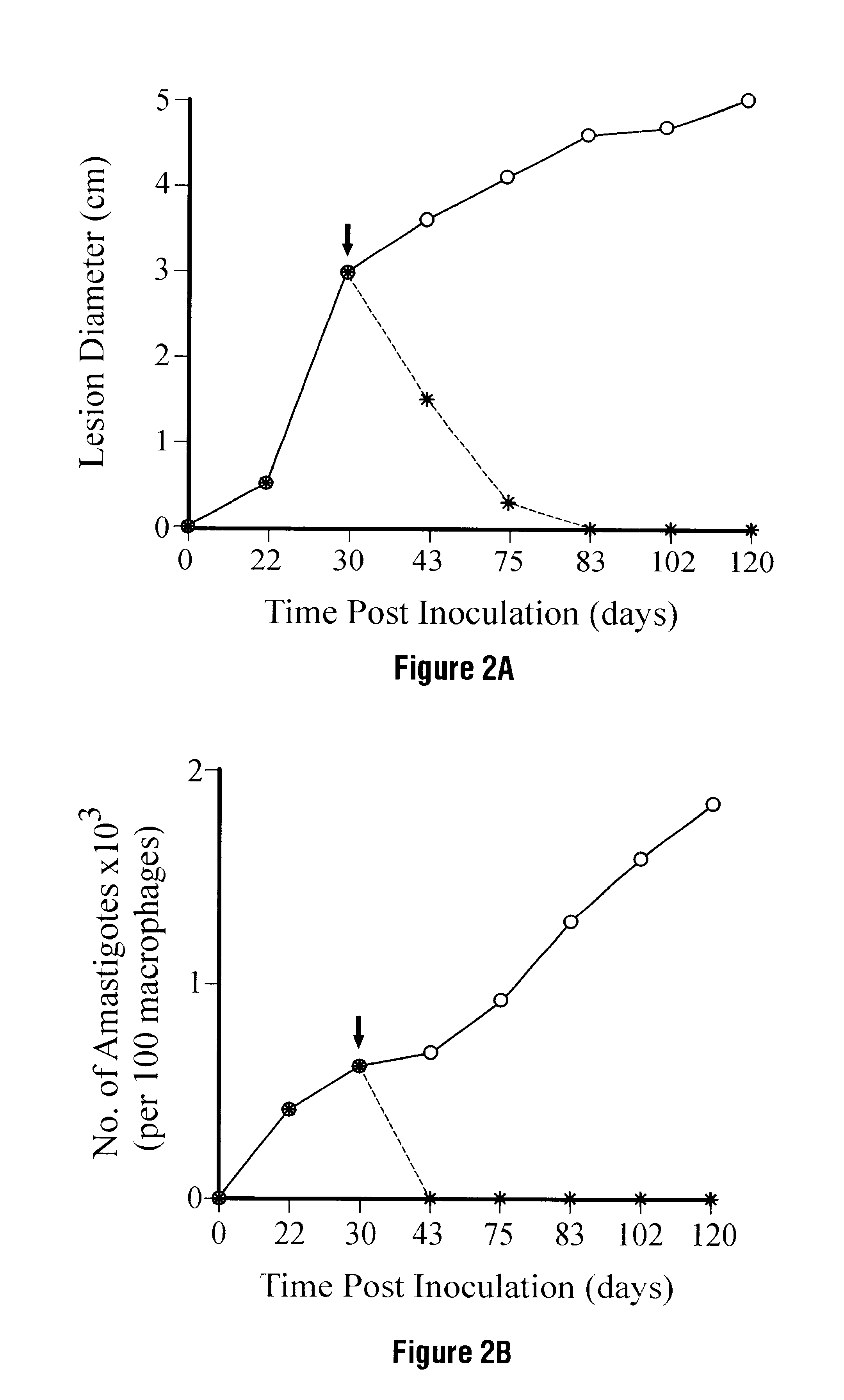Peptides for the activation of the immune system in humans and animals
a technology of peptides and immune cells, applied in the field of therapeutic methods for the treatment and prevention of diseases, can solve the problem that the immune system is not accessible to direct lytic effects of organisms
- Summary
- Abstract
- Description
- Claims
- Application Information
AI Technical Summary
Benefits of technology
Problems solved by technology
Method used
Image
Examples
experimental examples
VI. EXPERIMENTAL EXAMPLES
A. Example 1
SPYY Induced Activation Of Macrophages
Skin peptide YY (SPYY) and other related neuroactive peptides are shown to be endowed with broad spectrum antibiotic activity in vitro. The C-terminal .alpha.-helical domain that is common in these peptides is responsible for lysis of microorganisms, probably through membrane permeation. When administered to Balb / c mice which developed cutaneous leishmaniasis consequently to infection with Leishmania major protozoan parasites, SPYY induces healing of the treated mice. According to the old theory, healing may be due to the participation of cell mediated immunity as, in vitro, killing of intracellular parasites correlated with nitric oxide production. However, as the following experimental example shows, the potent therapeutic effect of SPYY results from its ability to activate cells of the monocyte / macrophage lineage and / or other lymphoid cells.
Chromatography of skin extract of the South American tree frog Phy...
example 2
B. Example 2
Dermaseptin Induced Activation of Macrophages
As the following example will demonstrate, the natural peptide antibiotic, dermaseptin ALWKTMLKKLGTMALHAGKAALGAAADTISQGTQ SEQ ID NO: 7 (Mor et al., 1991, Biochemistry 30:8824) kills Leishmania parasites both directly and through macrophage activation.
The efficacy of dermaseptin (DS) to kill parasites directly was investigated using Leishmania major, the responsible parasite for cutaneous leishmaniasis in man and animals. To control for any compounds carried over in the peptide preparation, an inactive peptide analog, DS.sub.16-34 (Mor and Nicolas, 1994, J. Biol. Chem. 269:1934), was used in parallel in all experiments. As shown in FIGS. 5A and 5B, DS induced direct lysis of Leishmania major at the two stages of differentiation. At 25 .mu.g / ml, 100% amastigotes or promastigotes were non viable within 1 hour incubation. For shorter incubation periods, the lytic effect was dose-dependent, the effect of DS on promastigotes of Leis...
example 3
D. Example 3
Therapy of Leishmaniasis with Dermaseptin in Dogs
In order to determine the therapeutic effect of the cationic amphipathic .alpha.-helical peptides of the invention in vivo, four dogs naturally infected with Leishmania were subjected to treatment with the dermaseptin DS s3 CONH.sub.2. The dogs used in this study were obtained from Corsica / France, an area with endemic visceral leishmaniasis. Animal having leishmaniasis were identified based on the typical clinical symptoms, i.e., epistaxis (nasal hemorrhage), uveitis and conjunctivitis (eye inflammation), adenopathy, and cutaneous lesions in the nose. It is well-established that infected animals do not recover or improve spontaneously. To date, one of the best known therapies is treatment with the drug Glucantime.RTM., an antimonial compound, administered at 300 mg / kg for 20-40 injections. However, Glucantime.RTM. does not cure the disease but only results in a transient reduction of the symptoms.
Methods and Results. The i...
PUM
| Property | Measurement | Unit |
|---|---|---|
| Body weight | aaaaa | aaaaa |
| Body weight | aaaaa | aaaaa |
| Volume | aaaaa | aaaaa |
Abstract
Description
Claims
Application Information
 Login to View More
Login to View More - R&D
- Intellectual Property
- Life Sciences
- Materials
- Tech Scout
- Unparalleled Data Quality
- Higher Quality Content
- 60% Fewer Hallucinations
Browse by: Latest US Patents, China's latest patents, Technical Efficacy Thesaurus, Application Domain, Technology Topic, Popular Technical Reports.
© 2025 PatSnap. All rights reserved.Legal|Privacy policy|Modern Slavery Act Transparency Statement|Sitemap|About US| Contact US: help@patsnap.com



